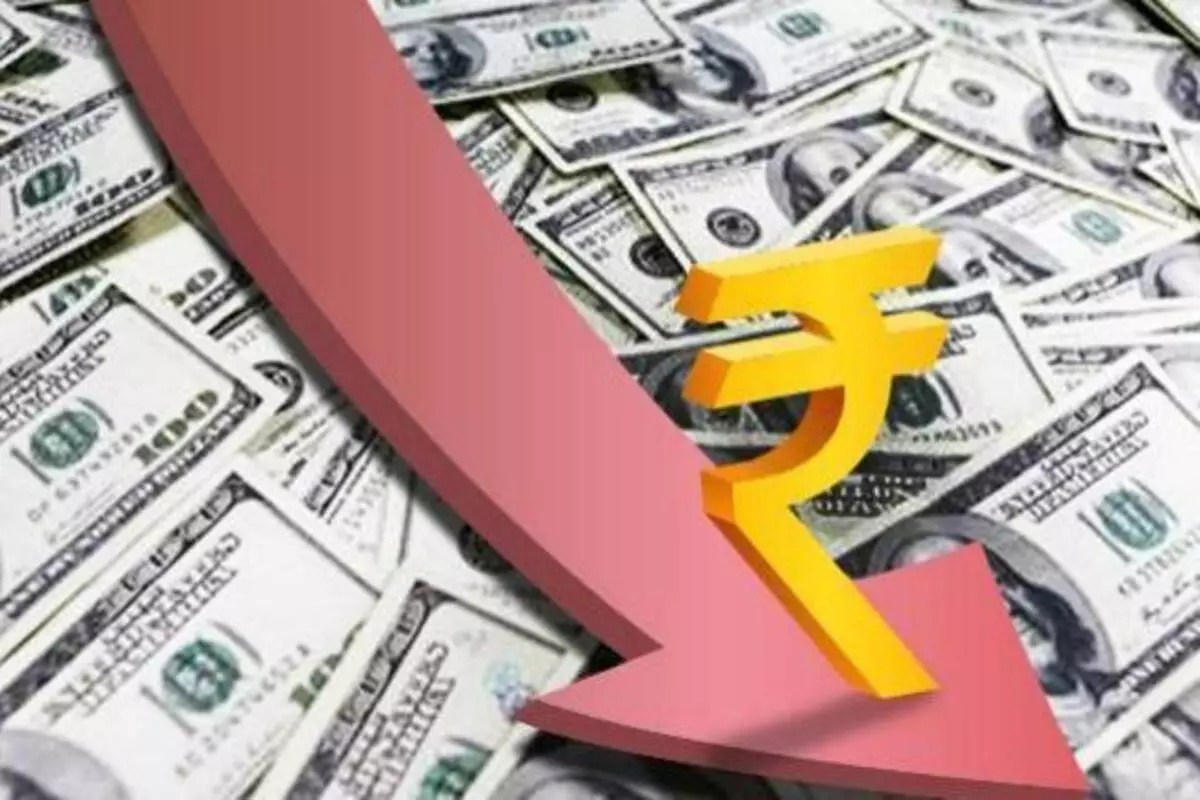
The Indian rupee experienced a depreciation of 11 paise against the US dollar, settling provisionally at 83.32 amidst various factors impacting both global and domestic markets. This downward trend was attributed to several key influencers, including a subdued performance in domestic equities, heightened dollar demand from importers, and foreign fund outflows. The rupee’s movement against the dollar has been closely watched, with its opening at 83.28 and concluding at 83.32, marking an 11-paise decline from its prior closure.
In the international realm, the dollar index, measuring the greenback against six major currencies, recorded a 0.11% increase, reaching 101.44. Simultaneously, Brent crude futures surged by 2.13% to USD 78.68 per barrel, further adding pressure on the rupee due to elevated oil prices.
Domestically, both the Sensex and Nifty, major indices in the Indian stock market, experienced a decline. The Sensex dropped by 379.46 points (0.53%) to 71,892.48 points, while the Nifty fell by 76.10 points (0.35%) to 21,665.80 points. Foreign Institutional Investors (FIIs) were noted as net sellers, offloading shares worth Rs 855.80 crore, as per exchange data.
Analysing the market dynamics, Anuj Choudhary, Research Analyst at Sharekhan by BNP Paribas, attributed the rupee’s depreciation to weak domestic markets, a stronger US dollar, and the surge in crude oil prices. Choudhary highlighted the dollar’s rise due to its safe-haven appeal amidst geopolitical tensions in the Red Sea and ongoing conflicts in the Middle East.
Looking ahead, Choudhary anticipated a negative bias in the rupee’s trading pattern, influenced by weak domestic equities, the USD’s ascent, and the impact of rising crude oil prices. However, he noted the potential support for the rupee from FII outflows at lower levels.
Also Read: Equities Markets Slump In Early Trade
Choudhary suggested that traders may take cues from upcoming data releases, including final manufacturing PMI and construction spending from the US, alongside manufacturing index data from India, ISM manufacturing PMI, and JOLTS jobs data from the US. He estimated a projected trading range for USD-INR spot price between 83.10 and 83.70.
Shifting the focus to domestic macroeconomic indicators, recent reports indicated a 10% increase in GST collections, totalling approximately Rs 1.64 lakh crore in December, compared to Rs 1.49 lakh crore in the previous year’s corresponding period. The finance ministry highlighted a robust 12% growth in gross GST collection during April-December 2023, amounting to Rs 14.97 lakh crore against Rs 13.40 lakh crore in the same period a year ago.
The interplay of global geopolitical tensions, the fluctuating US dollar, oil price surges, and domestic economic indicators continue to shape the trajectory of the Indian rupee against the US dollar, eliciting close attention from market participants and analysts alike.
To read more such news, download Bharat Express news apps


















